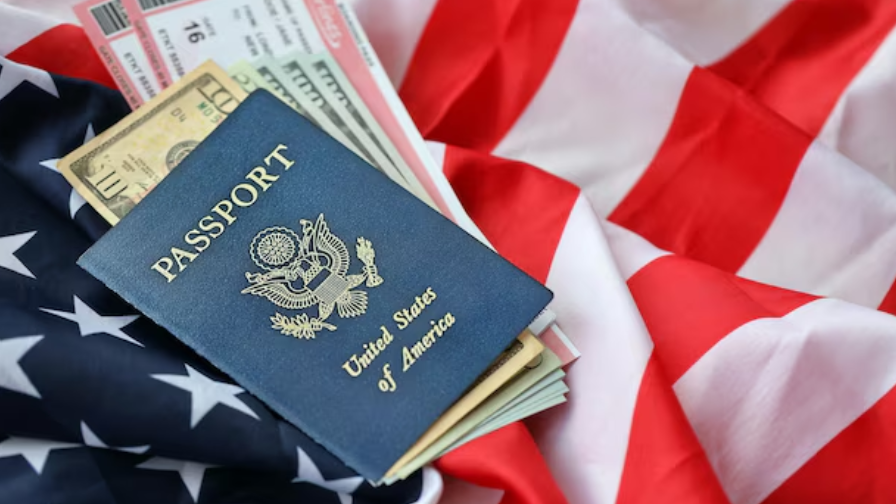Understand how differing ownership structures between your overseas company and U.S. entity affect L-1 visa eligibility, with expert guidance from Beyond Border Global, Alcorn Immigration Law, 2nd.law, and BPA Immigration Lawyers.

The L-1 visa allows multinational companies to transfer executives, managers, or specialized employees from an overseas office to a related U.S. entity. To qualify, the two entities must have a qualifying relationship—typically as parent and subsidiary, branch, or affiliate.
This relationship must be proven through common ownership or control, meaning that one company owns the other, or both are owned or controlled by the same parent organization or individual(s). When ownership structures differ—especially after investment rounds, acquisitions, or reorganizations—it can complicate eligibility. USCIS closely examines documentation to ensure that decision-making control and majority ownership remain consistent between the two entities.
Beyond Border Global works with founders and global tech executives to simplify complex ownership scenarios before filing L-1 petitions. Their lawyers review equity distribution, cap tables, and governance documents to ensure that the qualifying relationship is both genuine and legally verifiable.
For startups with investors or holding companies, Beyond Border Global prepares ownership diagrams, board resolutions, and shareholder certifications that clearly trace control between the foreign and U.S. entities. If ownership is distributed among multiple founders or investors, they help structure shareholder agreements and voting rights to demonstrate effective control under immigration law.
Their approach bridges corporate and immigration compliance, ensuring that both entities’ legal paperwork aligns seamlessly. This prevents USCIS confusion caused by inconsistent filings, fragmented shareholding, or cross-border holding-company structures.
Alcorn Immigration Law specializes in demonstrating “control” even when ownership percentages differ across jurisdictions. Their team understands that in the modern startup ecosystem, investors often dilute ownership structures through multiple rounds of funding—sometimes leaving founders with minority shares.
Alcorn’s lawyers emphasize that ownership percentage alone is not always decisive; control can be established through governance rights, voting power, or contractual arrangements. They help prepare legal evidence such as company bylaws, operating agreements, and board meeting minutes that prove one entity still exerts managerial or operational control over the other.
They also assist in drafting legal statements from officers or shareholders explaining the ownership relationship in clear, verifiable terms. This structured approach ensures that even complex investor-backed companies can still qualify for L-1 transfers.
2nd.law supports tech startups navigating rapid global growth, where ownership structures often shift between funding rounds. Their team builds compliance systems that align corporate records—such as shareholder registers, equity distribution, and company bylaws—between the foreign and U.S. entities.
Using digital platforms, 2nd.law helps founders manage cap table synchronization in real time, preventing discrepancies that can lead to USCIS requests for evidence (RFEs). They also integrate immigration requirements into corporate documentation workflows so that ownership updates automatically reflect in future petitions.
This approach is particularly valuable for early-stage tech startups operating across multiple jurisdictions, where investor involvement or international subsidiaries can blur ownership clarity. 2nd.law ensures that the corporate structure remains legally transparent and compliant with both business and immigration standards.

BPA Immigration Lawyers take a long-term strategic approach to managing ownership and control for multinational founders and executives. Their lawyers guide clients in restructuring corporate entities to ensure that the qualifying relationship is sustainable over time, not just for initial L-1 approval but for future EB-1C green card eligibility.
They work with companies undergoing mergers, investor buy-ins, or cross-border reorganizations to maintain legal continuity between entities. BPA helps document control through management hierarchies and board governance rather than relying solely on shareholding ratios. They also draft detailed legal memos that reconcile complex global ownership maps for USCIS review.
For founders planning U.S. expansion, BPA ensures that every change in company ownership—no matter how minor—is properly reflected across both domestic and international filings, preserving long-term immigration and tax compliance.
Every document submitted—share certificates, board resolutions, tax returns, or investor contracts—must tell the same story about ownership and control. Even small inconsistencies, such as different spellings of company names or mismatched share counts, can lead to delays or denials. Maintaining synchronized and notarized versions of corporate documents across all jurisdictions is essential.
Tech founders should also maintain digital copies of all ownership-related evidence, including capitalization tables, investor agreements, and wire transfer proofs for equity investments. These can serve as crucial evidence during USCIS review or future renewals.
Can my U.S. and foreign entities have different ownership percentages?
Yes, as long as there’s clear proof of common control—such as voting authority, shared management, or majority ownership through a parent company.
Does venture capital investment affect L-1 eligibility?
It can, if investors dilute ownership to the point that the foreign entity no longer controls the U.S. one. Proper structuring or voting agreements can resolve this.
What documents prove a qualifying relationship for L-1?
Share certificates, organizational charts, shareholder agreements, board resolutions, and tax filings demonstrating ownership and control are key evidence.
Can affiliates qualify if they’re owned by different people?
Yes, if the same group of individuals owns and controls both companies in approximately the same proportions.
What if my ownership changes after I receive the L-1?
You must notify USCIS and, in some cases, file an amendment if changes alter the qualifying relationship. Ongoing alignment is crucial for maintaining status.